The Kanchan View tea estate in Darjeeling has a rough history.
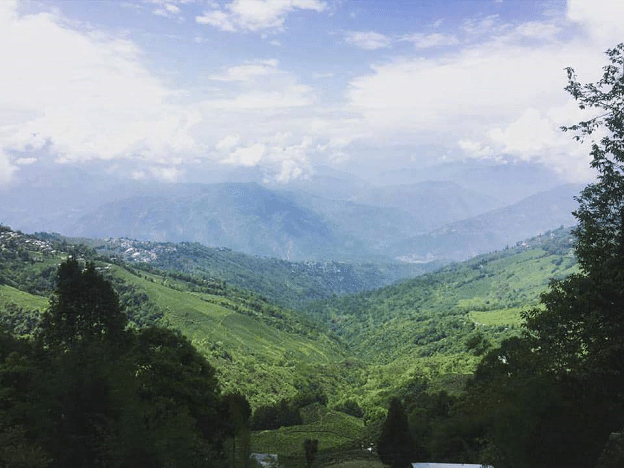
Photo by Rajiv Lochan
The garden was first established in the 1880s, where it first went by the name “Rungneet”. At the peak of its hundred-plus-year production, the 250-acre garden accounted for at least 100,000 kilos of tea a year. Now? It only does about ten percent of that. The reasons for this are long, complicated, and varied.
Over its troubled life, the garden has passed ownership at least four or five times. The location of the garden was another problem. Weather was sporadic, altitude also played a troublesome role, and then there was the cost of running a garden of that size. Currently, the garden—while considered organic—does about half the yield that it could possibly do.
Many of its Chinese tea bushes are either semi-feral or completely uprooted. Labor is also divided between weeding around the bushes that are still being plucked and cultivated, and adhering to the picking standard itself. That and the factory the garden utilizes for processing is the kind reserved for gardens half its size.
Troubled? Oh yeah. But one thing it has going for it, aside from pretty decent tea (considering the odds), is the view.
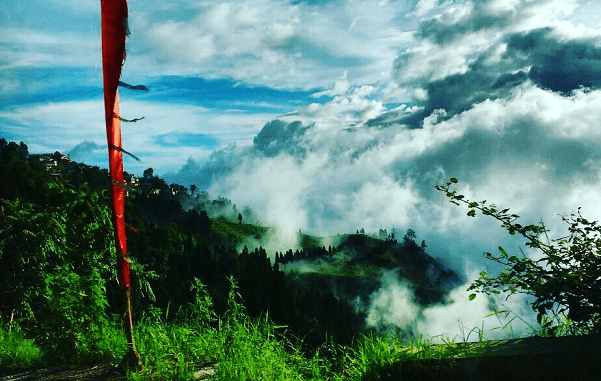
Photo by Rajiv Lochan
Seriously, that’s a helluva view, and it’s one thing the garden’s current owner—the Terai Group—hope to capitalize on. Hence the name change to Kanchan View, which basically means: “A place that has a great view of Mount Kanchanjuga”. (Not quite as poetic as some Chinese naming schemes, but it’ll do in a pinch.)
The one who passed along all this info was this guy—Rajiv Lochan of Lochan Tea.

I “may” have mentioned him a few times on this blog.
Okay . . . many times. (I’ve lost count.)
At World Tea Expo this last spring, he passed along a second flush Darjeeling from “The Garden Formerly Known as Rungneet”. I didn’t get an opportunity to brew it until I was on the plane back to Oregon. And . . .
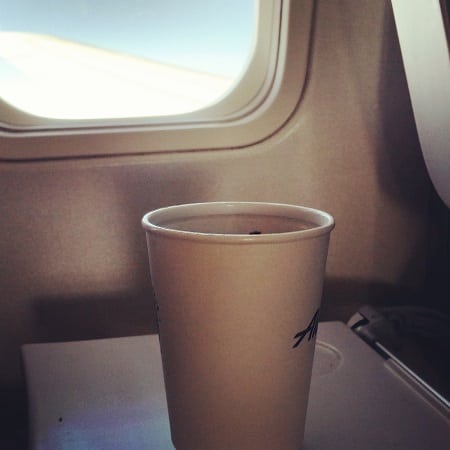
It was a second flush Darjeeling, alright. All muscatel.
I brought it out a second time at a mini-tea party thrown by Marilyn “Delights of the Heart” Miller about a month later.

Yep, still muscatel. It was exactly what one would expect from a Darjeeling second flush. Practically a template.
A month after that, I had a conversation with Rajiv about the garden. He informed me that they just acquired another pluck from there, now dubbed Kanchan View. He also [later] informed me about why he had a vested interest in this particular garden. They brought him in to consult on how to turn the tea estate into a “tea tourist” spot. With emphasis on the view of a certain mountain in its new namesake. As a bit of a side-deal, he also started carrying their teas.
The other pluck he spoke of was from July, whereas the one I acquired from him at Expo was from May. Of course, this confused me a little. Wouldn’t that mean both of them were in the category of “second flush”? To which, he told me, “No, July is when the rains came.”
In other words, a monsoon flush.
In the Darjeeling hierarchy of seasonal harvests, preferential treatment is usually placed on the second flush. That’s when all the Darjeeling-ish characteristics are present in the leaf. First flush is known for its very “green” flavor and spicy finish. And autumnal flushes are known for being just . . . burly and sorta there. Monsoon flushes are like the red-headed stepchild of the harvest Peking (picking?) order. And, to date, I’d never had one.
Until now.
Rajiv had his son Vivek send me some of the monsoon flush tea. So, this was a first for me—comparing two different seasonal flushes from the same Darjeeling garden, but one was from a seasonal flush I’d never tried before. Second flush vs. monsoon flush. Yes, another TEA FIGHT!!!

For brewing, I approached these two in exactly the same way. 1 teaspoon of leaves from each were put in their own 6oz. steeper cups. I brought water to a boil, poured it over to both cups, and waited for two-and-a-half minutes for each. If there were any differences between the two, it was due to their natural characteristics. Not my human error.
Kanchan View Darjeeling, Second Flush, 2016 (May)

The leaves for this Darjeeling looked to be standard second flush fair. They were cut small, brown, and yielded an aroma of mild spice and wild grapes. Pretty typical notes for a Darjeeling in late-spring. While I liked second flushes, I preferred the mega-spicy greenery of first flushes. However, there was room for the pleasant, medium bodied melody of fragrances to the second as well. This was definitely the latter. It didn’t deter too far away from the usual sensory suspects of its growing season, but that was to its favor.

The liquor brewed to a medium amber with quite a bit of depth. The aroma was sweet and sour-fruity, betraying both grapes and citrus notes. Like an orange tree had an illicit bacchanalia with a wine grapevine. The intro was smooth on delivery with only the slightest of tannic bites before moving on to notes of grapefruit, a dash of apricot, and finally ending on a bit of earth. A second flush through-and-through.
Kanchan View Darjeeling, Monsoon Flush, 2016 (July)
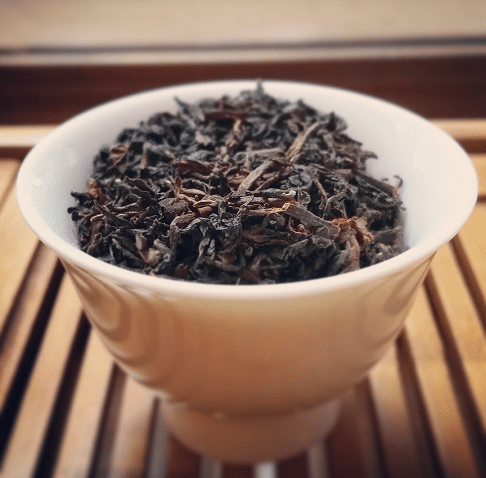
While the leaves looked the same as the second flush, the summer rains definitely brought out something different in . . . pretty much everything else. The leaf cut was the same, small-‘n-brown. Pretty average. But the aroma was markedly different. While May and June brought out the muscatel, the rains brought forth a wood-sweetness I don’t often associate with Darjeelings. Such aromatics were usually the characteristics of Fujian black teas. The smell was also somehow . . . smokier, further supporting the Fujian comparison.
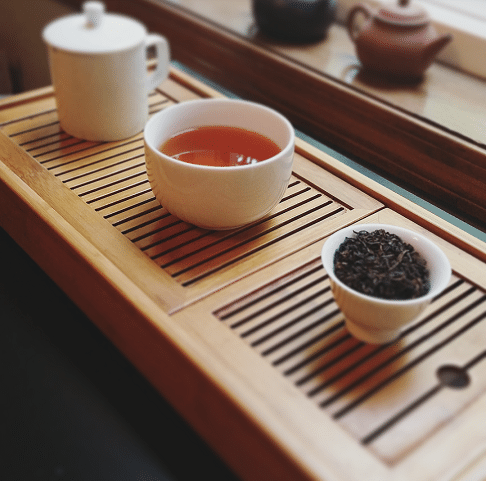
The liquor for the monsoon flush brewed considerably darker than the second flush. Instead of the usual shades of amber, this one colored full-on cherrywood red. Or more like “cherry-tree-that-was-petrified-into-copper” red. In other words, the color scheme of your average Assam. The aroma was all leather, wood, roasted pine trees . . . and a dash of sweetness on the back-end. The taste echoed these manly images reminding me of an unsmoked Lapsang Souchong I favored. The wood-sweetness was there, along with an alternating roasty-toasty pinewood note, and followed by a li’l bit of malt and madness on the finish.
Easily the heartiest Darjeeling I’ve ever had.
Which one was better? Well . . .
I’ll be the first to admit I don’t have the most . . . normal of palates. I don’t prefer second flush Darjeelings; I’m more of a first flush kinda guy. Autumnals don’t even register as a “thing” to my tongue. The monsoon, though? Maybe I’m just a fan of underdogs, and this underdog pluck from an underdog garden just hit all the right notes.
Monsoon flush, for the win. Maybe it was the wood-smoky notes, or its ability to put up with punishment. Either way, it hit all my subjective sweet spots. I look forward to viewing Kanchan View again next year.
Bring the rain.

For Rajiv Lochan’s writings on Kanchan View, go HERE and HERE.

Robert Godden
About that ‘red-headed’ remark…
lazyliteratus
You’re not red … you’re orange.
Xavier
Always new and interesting fights.
Bring them on.
Giles Oakley
Taken me some time to find this! My great uncle, Freddie Oakley, was listed in the 1949 Assam Directory as having be based at Rungneet. His brother was married to Nancy, owner of the Elgin Hotel in Darjeeling Town. Weird that I now find myself 25 years in to career in tea.